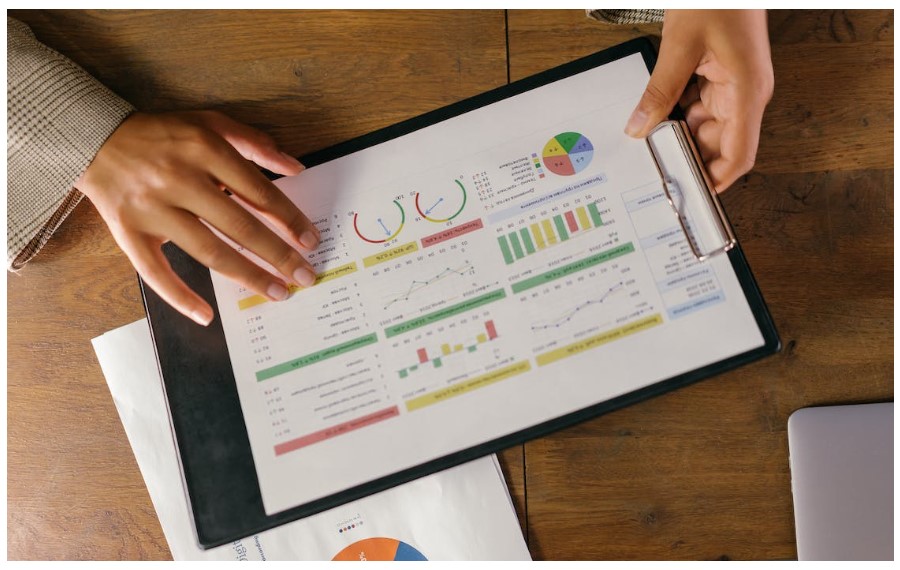In today’s academic landscape, research papers play a crucial role in advancing knowledge and contributing to scholarly conversations. As a student, you may have experienced the challenges of crafting a research paper that effectively communicates your findings and engages your readers. The good news is that there are numerous research paper writing services on the Internet that provide fast help. A quick search for “write a research paper for me” can lead you to reputable services ready to assist you in your academic journey. However, beyond the textual components of research papers, there is an often overlooked yet powerful tool that can significantly enhance understanding and impact: visualization.
In this article, we will embark on a journey of exploring the role of visualization in research papers and how it can transform your scholarly work. Visual elements, such as graphs, charts, diagrams, and infographics, have the potential to convey complex information in a concise and visually appealing manner. They go beyond words, allowing you to present your research findings in a way that captivates your readers and enhances their understanding. By incorporating visualizations strategically, you can effectively communicate your research concepts and make your paper more engaging and impactful.
Enhancing Comprehension and Interpretation
When it comes to research papers, one of the key challenges is presenting complex information in a clear and concise manner. This is where visualizations truly shine. By incorporating visual elements, such as graphs, charts, and diagrams, researchers can effectively convey intricate concepts and data that might otherwise be challenging to comprehend. Visualizations serve as powerful tools that break down complex information into easily digestible formats, making it easier for readers to grasp the essence of the research. Whether you’re illustrating trends, comparing data points, or showcasing correlations, visual representations bring clarity to your findings and help readers navigate through the intricacies of your research.
Moreover, visualizations play a significant role in funding your research. Funding bodies and grant committees often review numerous research proposals, and it is crucial to make your work stand out. By incorporating compelling visualizations in your research papers, you not only enhance comprehension but also leave a lasting impact on those evaluating your proposal. Visuals can effectively demonstrate the significance of your research, highlight key findings, and provide a visual narrative that captures the attention and interest of potential funders. The ability to present your research visually showcases your professionalism and commitment to effectively communicate your work, increasing your chances of securing the financial support needed to carry out your research endeavors.
Improving Communication and Engagement
Effective communication is essential to convey the significance of your findings and engage your readers. Visualizations play a pivotal role in improving communication by offering a clear and concise representation of research concepts. Whether it’s a well-designed graph illustrating trends over time, a visually appealing chart showcasing statistical comparisons, or an informative diagram outlining the research methodology, visual aids help to simplify complex information and make it more accessible to a wider audience. By incorporating visualizations in your research papers, you create a visual narrative that supports your written content and enhances the overall clarity of your message.
Beyond facilitating comprehension, visualizations also have the power to capture readers’ attention and engage them on a deeper level. In an era where information overload is a constant challenge, it’s important to find ways to stand out and make an impact. Visual aids serve as powerful attention-grabbing tools that entice readers to delve into your research and explore its implications further. They break the monotony of dense text and provide visual breaks that are visually appealing and stimulating. Whether it’s an eye-catching infographic summarizing key findings or an interactive chart that allows readers to explore the data themselves, visualizations foster an engaging reading experience that encourages readers to invest their time and attention in understanding your research fully.
Amplifying Research Impact and Accessibility
In today’s fast-paced world, where information is readily available and attention spans are shorter, it is crucial for research to be accessible to a wide range of audiences. Visualizations serve as powerful tools in making research more approachable and engaging for diverse readers. By presenting complex data and concepts in a visually appealing and digestible format, visualizations break down barriers of technical jargon and make research more accessible to individuals from various backgrounds. Whether it’s a captivating infographic shared on social media platforms or a visually compelling presentation at a conference, visualizations have the ability to capture the interest and curiosity of audiences who may otherwise find research papers daunting.
Moreover, visualizations have the potential to amplify the impact and dissemination of research findings. They provide an avenue for researchers to showcase their work in a visually compelling and memorable manner, enabling their research to stand out and leave a lasting impression. Visual representations of data and key findings not only enhance the clarity of research, but also make it more memorable and shareable. When research is presented in a visually appealing way, it becomes more likely to be shared, discussed, and cited by peers, experts, and even the general public. This not only increases the visibility and recognition of the research but also contributes to its overall impact and influence in the academic and broader communities. Visualizations thus bridge the gap between researchers and the public by transforming complex research into a format that is easily understood, appreciated, and disseminated, ultimately fostering greater engagement and collaboration in the scientific realm.
Conclusion
In conclusion, the exploration of the role of visualization in research papers reveals its transformative power in enhancing understanding and impact. Visualizations serve as valuable tools for researchers to convey complex information effectively, enabling readers to comprehend and interpret research findings with greater ease. By presenting data, statistics, and concepts in visual formats, researchers can engage their audience, capture attention, and improve overall communication. The use of visual aids such as graphs, charts, diagrams, and infographics enhances reader comprehension and facilitates the interpretation of research results.
